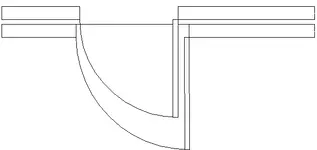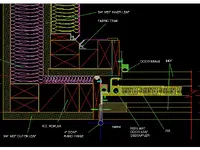ENIGMACODE
New member
 Hello again my friends ...
Hello again my friends ...In the past I've received lots of help from Rod Gervais, Innovations, RICK FITZPATRICK, Frederick and others ...
In the event some of you don't remember my project, I've constructed a free-standing multipurpose rehearsal room in the basement of my small row home. I took the acoustical advice from many of you here on the site. Most surfaces are double layered properly caulked 5/8" drywall totally de-coupled from any existing construction. There are no cutouts in the drywall for electrical boxes. Wiremold will be used to minimize openings. And all the openings are thoroughly caulked.
For obvious reasons of 'tightness', and the custom construction of the room, I need to 'custom-build' two doors.
I researched some data from Auralex concerning general construction of doors, and their characteristics:
"The biggest reason that doors are poor in the area of sound control often has little to do with the physical construction of the doors themselves. The weakest link in most door systems is that they are not sealed well with the floor below them or with the frame around them. You must use a compressed rubber threshold below your door and you must make sure that wherever the door shuts and would normally contact the door jamb it meets foam weatherstrip tape or a rubber gasket."
With this concept in mind, I intend to pay particular attention to constructing tight jambs and seals at the bottoms and tops of the doors.
With limited space, I don't think I'll be able to construct 'double doors'.
Here are current views of the unfinnished door openings:
http://home.ucwphilly.rr.com/livesound/opening-1.jpg
http://home.ucwphilly.rr.com/livesound/opening-2.jpg
Here are a few ideas in regard to door construction:
http://home.ucwphilly.rr.com/livesound/door-2.jpg
http://home.ucwphilly.rr.com/livesound/door-3.jpg
*It may be beneficial to construct the doors with a solid core. In which case I'm considering layering (sandwiching), 2 or 3 sheets of 3/4" Plywood. However I wonder about the wieght of such construction, and the possibilty of warping?
Your feedback is appreciated ....
*Feel free to read my profile

Best Regards
Michael Fraticelli
ROCKON@ucwphilly.rr.com
Last edited:






